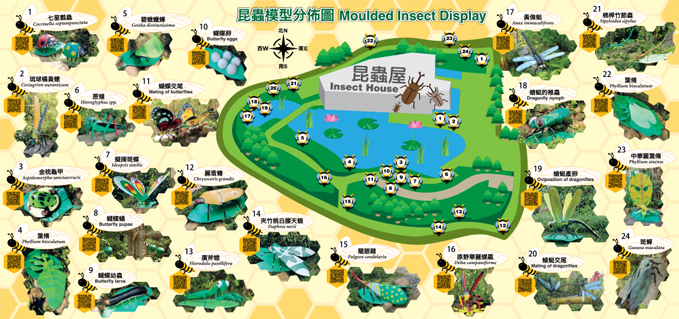 Leisure and Cultural Services Department - Tai Po Waterfront ParkLeisure and Cultural Services Department
Leisure and Cultural Services Department - Tai Po Waterfront ParkLeisure and Cultural Services Department
Moulded Insect Display

| Item10 | ||
|---|---|---|
| 蝴蝶卵 |  |
|
| Butterfly eggs | ||
| Description | Butterfly eggs come in different shapes and colours. They can be spherical, tyre-like or bun-shaped, and can be yellow, white, green or brown in colour. | |
























